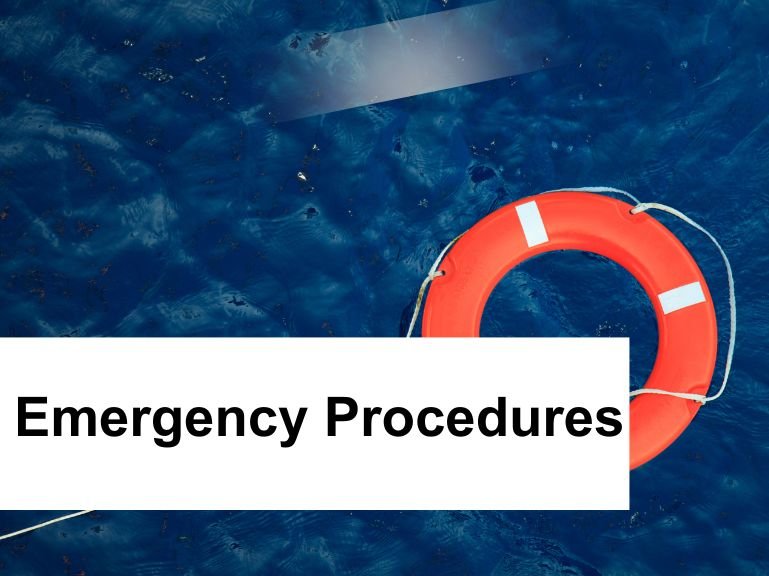Boating Safety: Emergency Procedures
Every time you set sail, the unpredictable sea demands respect. Whether you’re a seasoned sailor or a weekend boater, understanding and preparing for emergencies is not just a recommendation—it’s an absolute necessity. In this comprehensive guide, we delve into the crucial aspects of boating safety, focusing on emergency procedures that could mean the difference between a minor hiccup and a major disaster.

Key Takeaways
- Boating safety isn’t just about avoiding problems; it’s about being prepared to face them.
- From overboard recovery to fire handling, knowing your emergency drills is vital.
- Regular safety checks and understanding proper boating behavior can prevent many emergencies before they happen.
Importance of Emergency Preparedness in Boating
In the world of boating, being prepared for emergencies is as essential as knowing how to navigate. Whether it’s a mechanical failure, sudden weather changes, or a medical emergency, the readiness to handle such situations can save lives. Imagine you’re miles away from shore, and your boat starts taking on water, or a crew member falls overboard. Such scenarios aren’t just hypothetical—they’re real risks that demand serious preparation.
Essential Safety Gear for Boating
Ensuring you have the right safety gear onboard is the first step in emergency preparedness. Here’s what you need:
- Life Jackets: Check for one life jacket per passenger, ensuring they’re in good condition and fit well. Remember, a poorly fitting life jacket is a hazard in itself.
- First Aid: A well-stocked first aid kit is a must. Regularly check and update it.
- Fire Extinguisher: Ensure you have a Coast Guard-approved fire extinguisher onboard.
- Sound Signaling & Lights: Regularly test your sound signaling device and boat lights.
- Communication: Keep a cell phone in a waterproof bag and have a mirror for emergency signaling.
Pre-departure Safety Checks
Before you set off, a thorough check of your vessel is crucial:
- Examine the engine and bilge for leaks or fuel smells.
- Ensure adequate fuel levels.
- Check for carbon monoxide buildup in enclosed spaces.
Practicing Safe Boating Behavior
- No Alcohol: Remember, alcohol is a leading cause of boating accidents. Always have a sober person to take over if needed.
- Stay Alert: Pay attention to your surroundings and adhere to the Rules of the Road.
- Designate an Assistant Skipper: It’s wise to have someone who can handle the boat in case of emergencies.
Emergency Drills and Procedures (First part)
Overboard & Recovery Drills
Falling overboard is a serious danger, accounting for a significant portion of boating fatalities. Immediate action is crucial:
- Shout “Overboard” to alert others.
- Throw a life ring buoy or lifejacket to mark the spot.
- Assign a spotter to maintain visual contact with the person in the water.
Sinking & Capsizing Drills
In the unlikely event of your boat sinking or capsizing:
- Ensure everyone is wearing a life jacket.
- As you abandon ship, grab emergency signaling devices and other floatable items.
- Try to stay with the watercraft as it’s easier for rescuers to spot you.
Collision and Hull Leak Drills
If a collision occurs:
- Secure life jackets for all passengers.
- Inspect for water ingress and hull damage.
- Be ready to signal for help if needed.
Emergency Drills and Procedures (Second Part)
On-Board Fire Drills
In case of a fire:
- Stop the boat and ensure everyone is wearing life jackets.
- Position the boat so the fire is downwind and shut off the fuel supply if the fire is engine-related.
- Use the fire extinguisher effectively and prepare for evacuation if necessary.
Watercraft Breakdown Drills
If your boat breaks down:
- Slow down or anchor your boat.
- Investigate and attempt repairs.
- Signal for help if the problem can’t be fixed at sea.
Planning and Preparedness Strategies
Float Plans
Always make and share a float plan detailing your intended journey, expected return, and safety gear on board. This is vital information for the Coast Guard in an emergency.
Pre-departure Checklist
Use a checklist to ensure all essentials are accounted for before setting off.
Weather Checks
Always check the weather forecast before departure. Avoid heading out if there’s a storm warning.
FAQs
- What should you do first in a boat emergency? Start by ensuring everyone has their life jackets on and is aware of the situation.
- How do you handle a fire on a boat? Stop the boat, ensure everyone’s safety, and use a fire extinguisher wisely.
- What are key items in a boat emergency kit? Life jackets, first aid kit, fire extinguisher, signaling devices, and communication tools.
Conclusion
Boating is an enjoyable experience, but it comes with its share of responsibilities. Being well-prepared for emergencies is not just a matter of compliance, but a commitment to the safety of yourself and those aboard. Regular practice of these procedures and adherence to safety protocols is the best way to ensure a safe and enjoyable time on the water.
